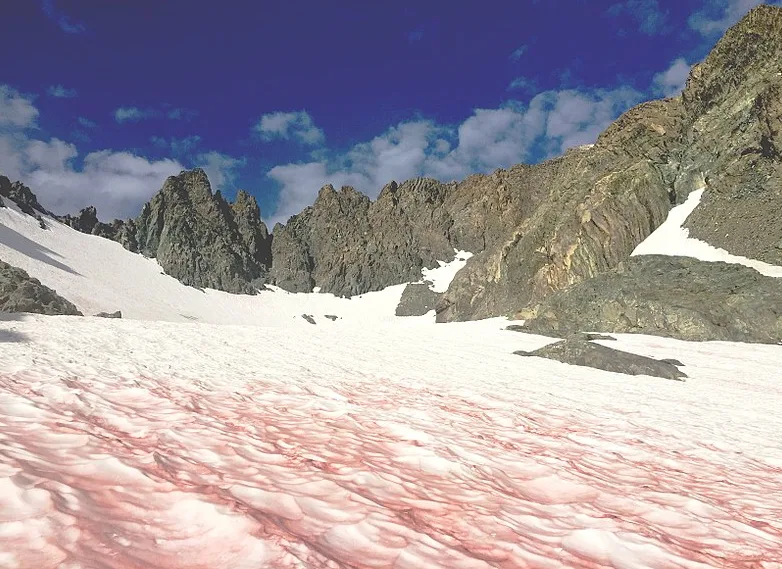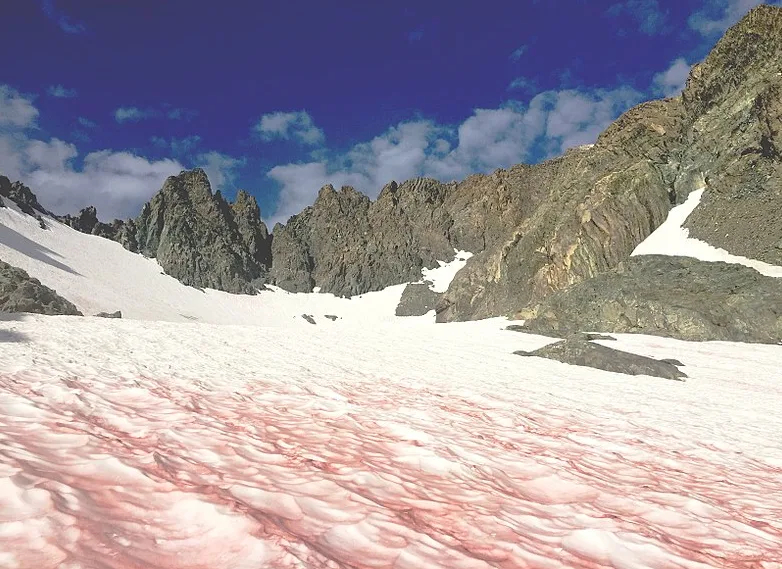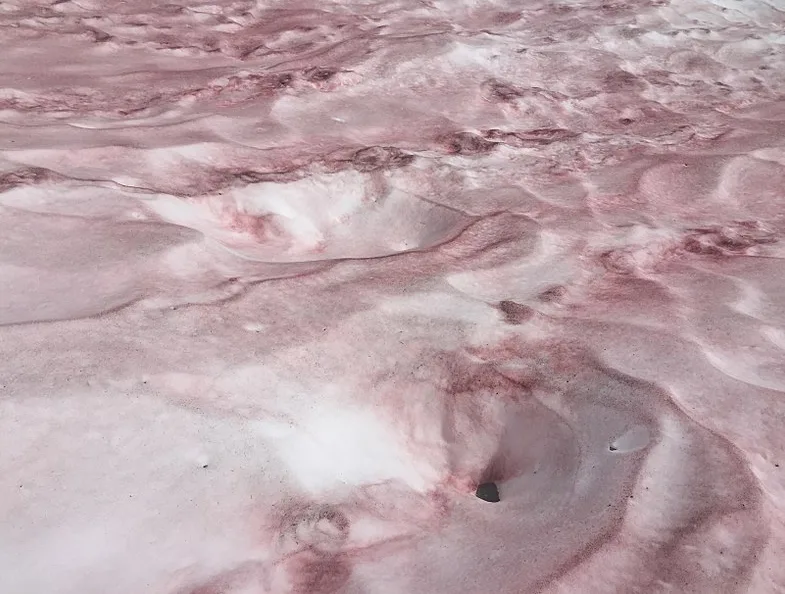
Watermelon snow appears in national park, experts say DON'T eat it
Watermelon snow, which looks and smells like -- you guessed it -- watermelon, has been showing up on mountains along the Pacific coastlines of North America.
Yosemite National Park shared recent photos of this phenomenon on Twitter and says that even though it is August, there is still plenty of snow and ice in the park at high elevations.
Watermelon snow is caused by a species of green algae that contains a red pigment and commonly occurs in alpine and coastal polar regions at altitudes of 3,000 to 3,600 metres.
Yosemite National Park explains that the bright red pigment acts as 'natural sunscreen' for the algae by protecting it from damaging UV radiation.

Watermelon snow pictured in Inyo National Forest, California in 2017. Credit: Wikimedia Commons
This type of snow gets its name from its pinkish hue and slightly sweet smell that is reminiscent of watermelons.
Footprints and other types of compression enhance the pinkish-red colour and walking on it can result in the colour being transferred onto clothing.

Another view of the watermelon snow in Inyo National Forest, California in 2017. Credit: Wikimedia Commons
While it might be tempting to further explore this phenomenon, experts warn against eating snow as it could contain dirt, microbes, and other bacteria that have the potential to make humans sick.
In an interview with AccuWeather, Dr. Jennifer Johnson from Mayo Clinic Health System says that "any snow has the risk of containing pollution, dirt and microbes. Snow that has been on the ground for a couple of days may have chemicals from snow removal, dirt, microbes from the dirt and animal debris."
With files from Cheryl Santa Maria.






